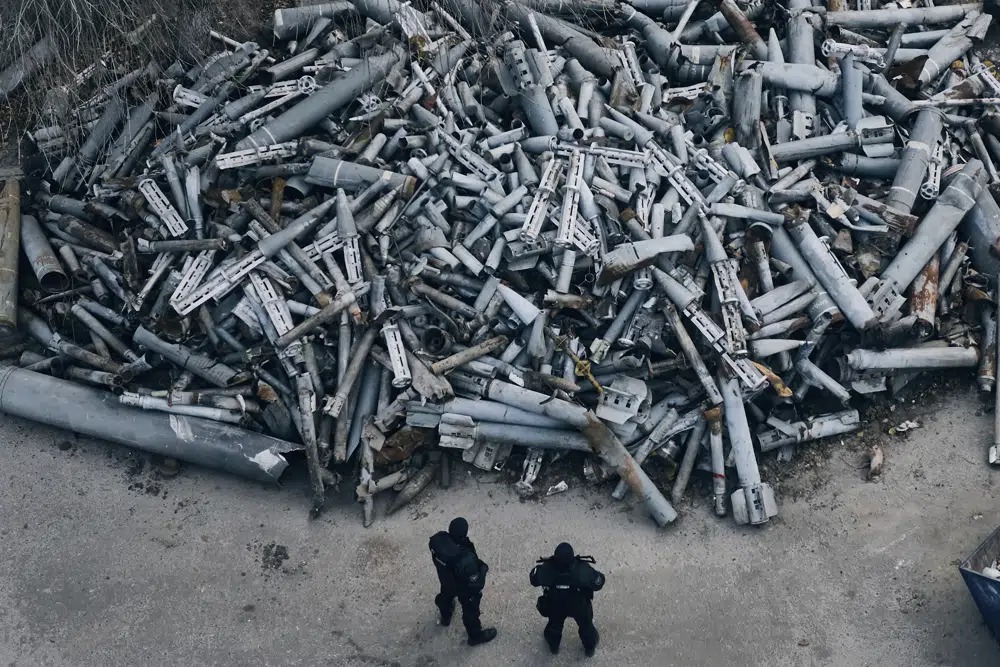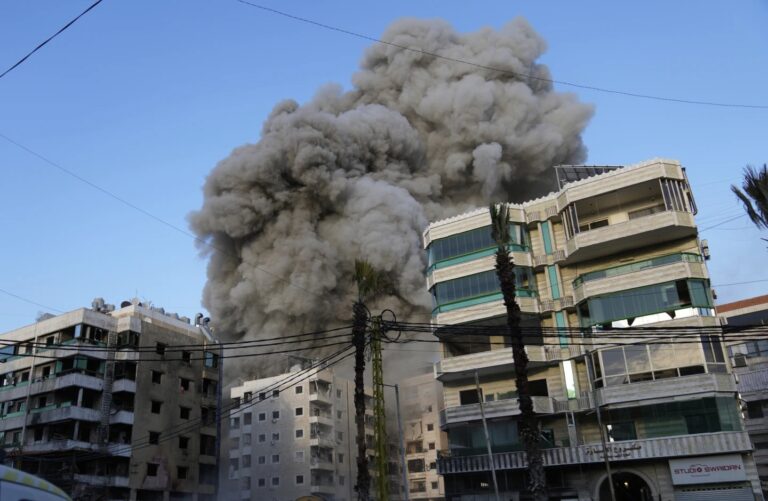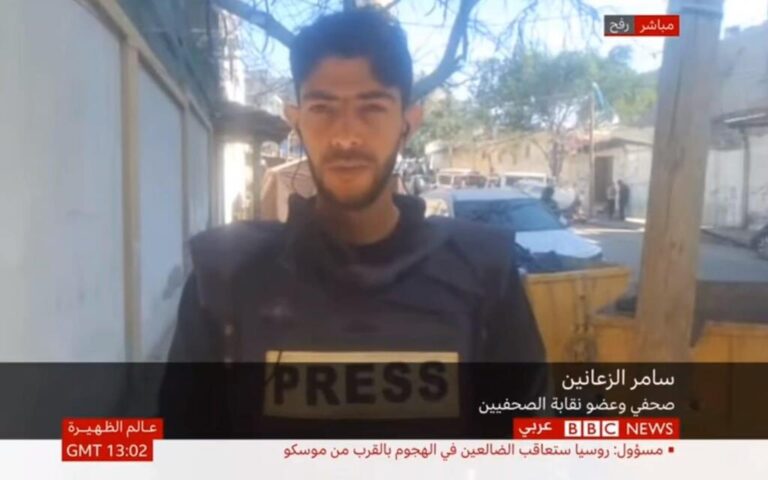With the war in Ukraine grinding through its 10th month, both sides are locked in a stalemated battle of attrition, which could set the stage for a new round of escalation.
Many observers see the current deadlock as beneficial to Ukraine, allowing it to receive more state-of-the-art weapons from the West and prepare for new counteroffensives. In Russia, there is a growing sense of desperation among hard-liners about what they see as President Vladimir Putin’s hesitancy and lack of a clear strategy.
Military analysts note the fighting is likely to intensify again shortly as the soil freezes. Many point to Russian-occupied areas in the south as the most likely place for the next Ukrainian attack.
“The ground needs to properly freeze before you can move vehicles with more freedom,” Justin Crump, a former British tank commander who heads security consultancy Sibylline, told The Associated Press.
He noted that while it’s harder to sustain military operations in colder weather, it will reopen opportunities for more maneuvering, and “as the winter goes on, both sides will have a growing offensive capability.”
Crump argued the Ukrainian military could try to reclaim parts of the southern Zaporizhzhia region and push toward the strategic port of Mariupol on the Sea of Azov. That would allow Ukraine to cut Russia’s land corridor to Crimea, which it annexed in 2014. Mariupol fell to the Russians in May after a nearly three-month siege that left much of it in ruins.
Independent Ukrainian military analyst Oleh Zhdanov also argued that the Zaporizhzhia region seems a likely target of the next Ukrainian offensive.
“The Ukrainian artillery and rocket systems have concentrated their strikes there,” he said, adding that the military has targeted Russia’s supply lines in the area like it did during a counteroffensive in the neighboring Kherson region that led to a Russian pullback from the capital of the same name.
Russia, which has suffered humiliating military setbacks in recent months, has called up 300,000 reservists to compensate for its heavy battlefield losses. Putin said last week that half of them were still being trained at firing ranges away from the front lines.
“Russia is trying to build up a better striking force rather than just throwing people into the front line,” Crump said. “They think they can last the course and come back in greater numbers next year and do something much more impressive then.”
While working to bolster its attacking force, the Russian military also has stubbornly pressed its effort to ram through the multilayered Ukrainian defenses in the eastern region of Donetsk in dogged trench warfare reminiscent of World War I, making slow progress in recent weeks.
Crump observed that Russia’s apparent strategy behind relentless attacks on the Ukrainian stronghold of Bakhmut in the Donetsk region is to try to force Kyiv to keep a sizable number of troops there and inflict heavy losses.
“It’s all about buying time, lasting the course, grinding down the Ukrainians,” he said. “They want to just reduce the capability of the Ukrainian armed forces by … killing Ukrainian soldiers and destroying Ukrainian equipment faster than Ukraine can generate them.”
Ukraine, in turn, has tried to keep its opponent off balance with surprise attacks, some of them deep inside Russia.
In a watershed development last week, Moscow acknowledged that Ukraine hit its strategic air bases located more than 500 kilometers (more than 300 miles) east of the border with modified Soviet-made drones. Ukraine hasn’t openly claimed credit for the strikes, but the country’s top security official said that Kyiv considers all Russian territory fair game for such attacks.
“Whether or not they have a significant impact on Russian military capability, they’re certainly shattering Russian morale and causing deep confusion,” Crump said of the Ukrainian strikes.
Since October, Moscow has particularly focused on pummeling energy facilities and other key infrastructure with missile and drone strikes in an apparent hope of breaking the will of the Ukrainians and forcing Kyiv to negotiate on Russia’s terms. On Friday, Russian forces launched a new barrage of missiles at several cities, Ukrainian officials said, resulting in significant power cuts.
“The strikes on the energy infrastructure are aimed at inciting social tension and raising pressure in order to push for talks,” Zhdanov said, adding they haven’t had much impact on the capability of the Ukrainian army, which has mostly relied on diesel generators. He noted Russia’s attacks have only strengthened Ukraine’s resolve by “causing anger and and a desire to take revenge.”
Ukrainian President Volodymyr Zelenskyy said the bombardments have destroyed half of his country’s infrastructure, urging the U.S. and other Western allies to quickly provide more air defense weapons to fend off the attacks.
U.S. officials said this week that Washington is poised to approve providing Ukraine with a battery of Patriot air defense missile systems, a potent weapon capable of shooting down Russian missiles.
The Kremlin argues that by providing Ukraine with such weapons, training its troops and sharing military intelligence, NATO has effectively become a party to the conflict. It warned Washington the Patriot systems and any U.S. personnel deployed to train Ukrainian troops on using them will be a legitimate target for Russia.
In remarks last week that reflected growing concerns about escalation, NATO Secretary-General Jens Stoltenberg warned that the fighting could spin out of control and morph into “a major war” between the alliance and Russia.
Putin has cast the attacks that left millions of Ukrainians without power, water and heat amid freezing temperatures as a legitimate response to October’s truck bombing of a bridge linking the Crimean Peninsula with Russia’s mainland. The Kremlin blamed Kyiv for the attack.
In a rare acknowledgement that his plans for a quick victory have gone awry. Putin said last week that achieving Moscow’s goals in Ukraine could be a “lengthy process,” but insisted that the Russian military efforts were proceeding in a “stable” way.
Russian hard-liners mocked Putin’s statement.
Igor Strelkov, a former Russian security officer who led separatist forces in eastern Ukraine when the conflict there began in 2014, scathingly criticized Putin and his generals for what he described as their failure to set clear military goals and mobilize all available resources.
“In most units, soldiers and officers don’t understand what they are fighting for,” he said after a short trip to the war zone. “It leads to apathy and erodes combat spirit.”
Strelkov charged that a protracted conflict could be “suicidal for the Russian Federation, its government and elites.”
Retired Col. Viktor Alksnis, a hard-liner known for trying to prevent the 1991 collapse of the Soviet Union, warned that same fate could befall Russia. He said a looming military defeat in Ukraine would lead to Russia’s “shameful capitulation and its subsequent breakup,” arguing that the use of low-yield battlefield nuclear weapons was “the only way to prevent it.”
Dmitry Medvedev, deputy head of Russia’s Security Council chaired by Putin, warned last month that the continuing Ukrainian offensive could trigger a nuclear response in line with the country’s deterrence doctrine that envisions the use of those weapons when a conventional attack threatens the existence of the Russian state.
By backing Ukraine’s ambitions to reclaim more territory, Medvedev said, “Western powers are pushing the world to a global war.”
Tatiana Stanovaya, an expert with Carnegie Endowment who follows the attitudes by the Kremlin and Russian elites, pointed to a growing sense of hopelessness and despair among the ruling class.
Members of the ruling class have seen the latest Russian military setbacks as a sign that the country is heading toward a military defeat, she noted.
“Everything is being seen as a rapid descent into chaos and even the collapse of the country,” Stanovaya said in a recent analysis.
She pointed at a widening divide between those among the ruling elites who advocate freezing the conflict to allow Russia to recoup its losses and those who favor raising the ante.
“Putin looks like a weak figure to both camps in the elite,” she said.
(AP)











